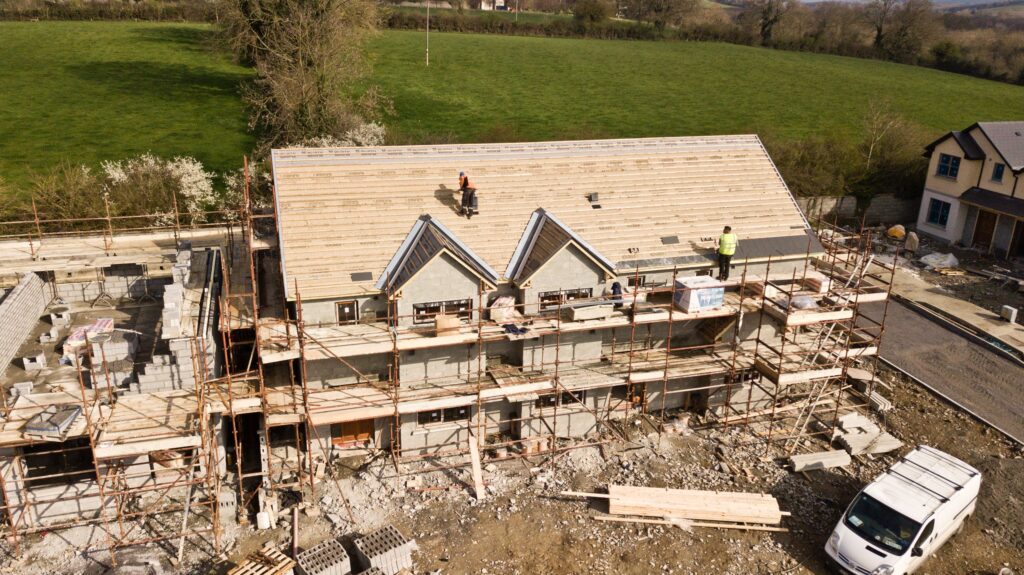By Khalid Noor, 2022
A construction project is multifaceted, containing various phases to be completed in order to arrive at the final product. A lot of careful planning with the inclusion of estimation and finances, scheduling and workflows and budgeting as well as making sure safety and quality of build are adhered to among other factors.
These different factors can be incorporated into a construction management software for the purposes of project management. A project manager must be across these different elements and must work with different members of the construction team to complete a project.
A construction management software is a platform where different members of a construction team can collaborate on different areas of a project respectively. It can contain those aforementioned factors, all of them, some of them or choose to focus on one of them, such as a construction scheduling software.
This blog aims to illuminate why construction scheduling is important especially in the context of a construction management or more specifically a construction scheduling software. However, to gain more context into construction softwares the other areas/aspects of construction that can be incorporated into construction will be briefly touched upon.
In terms of project management a construction management software will incorporate various areas of construction related to a construction or project manager, however it will also include other areas that the manager can keep tabs on such as the construction scheduling, which may be done by a construction scheduler, but everything being on the one platform enables effective collaboration.

There exist estimation tools for the purposes of construction as softwares that can be utilised to help with the estimation of a project. While scheduling is concerned with the time management and completion of the project and its workflow, an estimation software is built to provide accurate estimations on the labour, materials including line-by-line estimates while utilising pre-determined formulas and calculations to make it easier for estimation to be done.
Quality and safety softwares also exist and they aim to provide visual reporting and data on incidents that have occured or may occur based on the project and aim to help minimise the risks and mitigate damage on a construction site. This is done to ensure there is less of a chance of problems arising due to litigation by ensuring best practices and compliance are adhered to within the set boundaries of the construction industry.
Other various softwares exist such as inventory management softwares that can aid in making sure inventory is managed well and ordering of materials is done on time if it needs to be done and not too late as that can be detrimental to a project. Cloud file management systems exist to help alleviate the strain of the current heavily paper based construction industry and making it easier to store and collaborate on documents to give peace of mind.
Construction projects can be stressful with deadlines for tasks and for the project itself looming overhead. This is where construction scheduling comes in. Construction schedule is simply put, a plan. One that details the different tasks and phases of a project and the resources and labour involved with those tasks and how they are allocated respectively. It intends to secure a project from being derailed by foreseeable and unforeseeable issues
A construction project is a complexity in its own way involving various different phases each with their own tasks. It can be extremely overwhelming and depending on deadlines the pressure can be daunting when faced with completing a project. That being said, that is why there is construction scheduling.
A construction is a plan that details all the different tasks and timelines/phases of a project as well as the resources and labour involved in the project and how they will be allocated accordingly. It aims to help keep a project on track and not be derailed by issues in order for it to be completed in a timely manner.
In a workflow, one completed action will lead on to another action and so on until completion of the project. Who completes each action and how is also important and to be detailed in a project schedule or workflow. Other important factors to look at are for each action what are its start and end time, as each task should have its own duration as well as its own resources allocated to it. If done correctly, the resources are allocated efficiently and the project is completed in a timely manner.

If resources are not allocated properly there can be issues due to shortages that pop up in the duration of the project and on its own this can lead to more problems and can derail a project and cause delays. These delays can be quite expensive and eat into the budget of a project. The labour and the materials need to be both looked at and allocated properly. The different tasks also need to be sequenced properly.
Projects are becoming increasingly more complex and budgets are decreasing, hence the need for comprehensive planning and scheduling. Scheduling is much more important today than in the past. A construction project is not just for the scheduler or project manager but for other project participants so that they can all collaborate together to complete the project.
As aforementioned because there can be delays in a project, a project schedule is even more important due to this factor, due to the fact that delays are expensive and every day that certain pieces of equipment sit there unused money is going down the drain. The owner and contractor can incur further expenses beyond the original scope as a result of this in order for them to properly support the completion of the project. A project schedule aims to also forecast delays as they might happen.
What delays could happen? It depends on the project and different variables, for instance if it might snow and that might affect what work can be done that should be accounted for by taking into factors the average number of days in a certain period it might snow and removing weekends and then accounting for that in the project.
When crafting a project schedule you need to gather information. At the commencement of the project information is gathered from clients, such as their requirements. Information on materials will also be needed and how to procure these materials as well as how long it will take you to acquire these materials. The materials will need to be delivered so this needs to be factored into your schedule as well.
Make sure all external factors are accounted for as well as, an example of this is holidays and whether or not people are working on those holidays or not, if it wasn’t accounted for in the schedule it can affect a project in the long run.
When creating a schedule and assigning time periods to different tasks it’s important to know that it is common to underestimate tasks so make sure to allow extra time for tasks than what you originally came up with.
Where will you do the construction scheduling? Well a construction scheduler can create a graphical or visual representation of the schedule or have it written step by step in a document, however it is better to have it visualised as it is easier to stick to and follow the deadlines.
With visuals you can color code and easily visualise who is attached to what project and makes it much easier to see what you are doing. You will also be able to easily link tasks together that are related and may depend on each other. People will commonly use a Gantt chart to complete their scheduling. The schedules or workflows are represented by charts or bar charts such as the popular aforementioned Gantt Chart which is used to display a schedule, the chart itself consisting of horizontal lines to highlight how much work has been completed or production completed within a set defined amount of time and it is contrasted with how much time was actually planned for those different periods or set amounts of time.
The best way to do construction scheduling is with construction software. There are a variety of existing construction softwares for different functions in construction such as estimation for the purposes of estimating the expenses associated with a project and to help with the bid process of a project detailing line-by-line expenses and costs of materials and labour and other relevant factors.
Scheduling softwares works very much the same, allowing all the functions of construction scheduling to be done on one platform where everything is linked and much easier to work with. To put it simply, a construction scheduling software should enable you to collect information on tasks and prioritize those tasks, then add durations to those tasks and represent them on a gantt chart or any other appropriate visualisation tool. Following materials and other relevant factors accounted for in the segmented tasks, the different construction phases such as ‘laying foundation’ for instance can be grouped with its individual members, which can allow for communication between different groups. This communication between groups will be touched on shortly.
This aspect of a construction management software aims to help assess, manage and mitigate risk on a construction site. It takes action to help provide meaningful data on current and previous construction projects that help you to determine risk and make better decisions. It should aim to reduce errors and hence mitigate damage in a project. Creating comprehensive reports on project information that can be visualised and summarised effectively giving important insight into a project is also important. So essentially reporting tools that gather data, such as measuring the amount of incidents that occur, the type of incidents and pointing out different hazards. This helps a project stay on track and not be derailed by defects and issues.
A good construction software makes use of good project management functionality, estimate and financial/accounting tool functionality, job management, scheduling and planning and support functionalities and more. WunderBuild is a construction management software that aims to provide all of these functionalities and more to bring out the best outcomes for a project.
It is currently offering a free trial, visit here to try WunderBuild for free.




